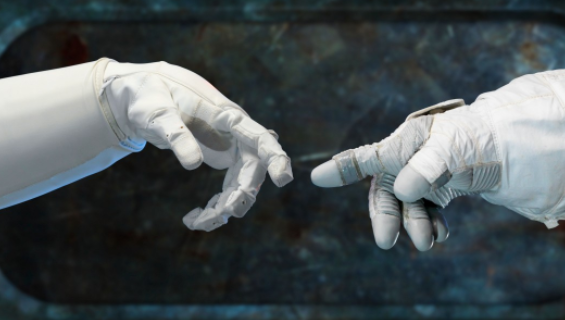
When thinking of the future of robots, its hard to not picture out the many uses of these machines as they might just be able to do all of the time-consuming and tiresome tasks that usually need to be carried out. Robots usually have an error rate of just 1% which means that when washing plates, it would drop one dish out of a hundred.
Engineers add 'fingertips' to robots
Engineers are now trying to do something in order to avoid the 1% error rate while adding a sense of touch. In order to fix this particular issue, engineers have decided to give these machines fingertips. This was similar to that recently descibed in the popular Science Robotics journal.
It now feels in a somewhat decidedly non-human way by being able to sense the small changes within the finger's very own magnetic field. This could also one day make for what would be an ultra-sensitive prosthetic hands and for robots that wouldn't really maim tableware or people due to them being able to control their own grasps.
The imprtance of fingertips
AskBiologist explains that humans can feel pressure and texture with their own fingertips. This is thanks to the really specialized sensory cells in the skin that are called mechanoreceptors. These, going along with the nervous system in general, actually translate mechanical information coming from the environment into certain signals that the brain is capable of comprehending as the human perception of "touch."
This is then combined along with thermoceptors which are capable of sensing temperature as well as nociceptors which are able of sensing pain. The combination basically means that humans are still able to both manipulate the world around them without having to hurt themselves.
Read Also: Mariana Trench Snailfish Robot Created to Find Lurking Beasts Below Deep Ocean
How would fingertips improve robots
The story by Wired notes that there is a need for robots to be able to do the same, only that it is necessary that the robots won't hurt themselves and humans in general. A robot might be able to assist the elderly by simply lifting them both in and out of bed. With the tactile feedback, it would then be much more safe for the domestic robot to be able to interact with people.
This was according to a computer scientist known as Youcan Yan coming from the University of Hong Kong as well as the City University of Hong Kong. He is also known as the lead author on the official new paper that describes the system. It was also noted that robots can be able to accomplish a number of muchj more complicated challenging tasks like dexterous grasping as well as manipulation.
It was also noted that it is not only feasible, though, to try and be able to replicate the very complicated human touch system. Yan's team notes that they "kinda" replicated it. The main skin of the robot fingertips is reportedly made out of flexible magnetized film. This would then generate magnetic field within the said device.
Related Article: New AI Algorithm Predicts Planets' Orbits and Other Behaviors-- Allegedly Proving Simulation Theory?
This article is owned by Tech Times
Written by Urian Buenconsejo
![Apple Watch Series 10 [GPS 42mm]](https://d.techtimes.com/en/full/453899/apple-watch-series-10-gps-42mm.jpg?w=184&h=103&f=9fb3c2ea2db928c663d1d2eadbcb3e52)



